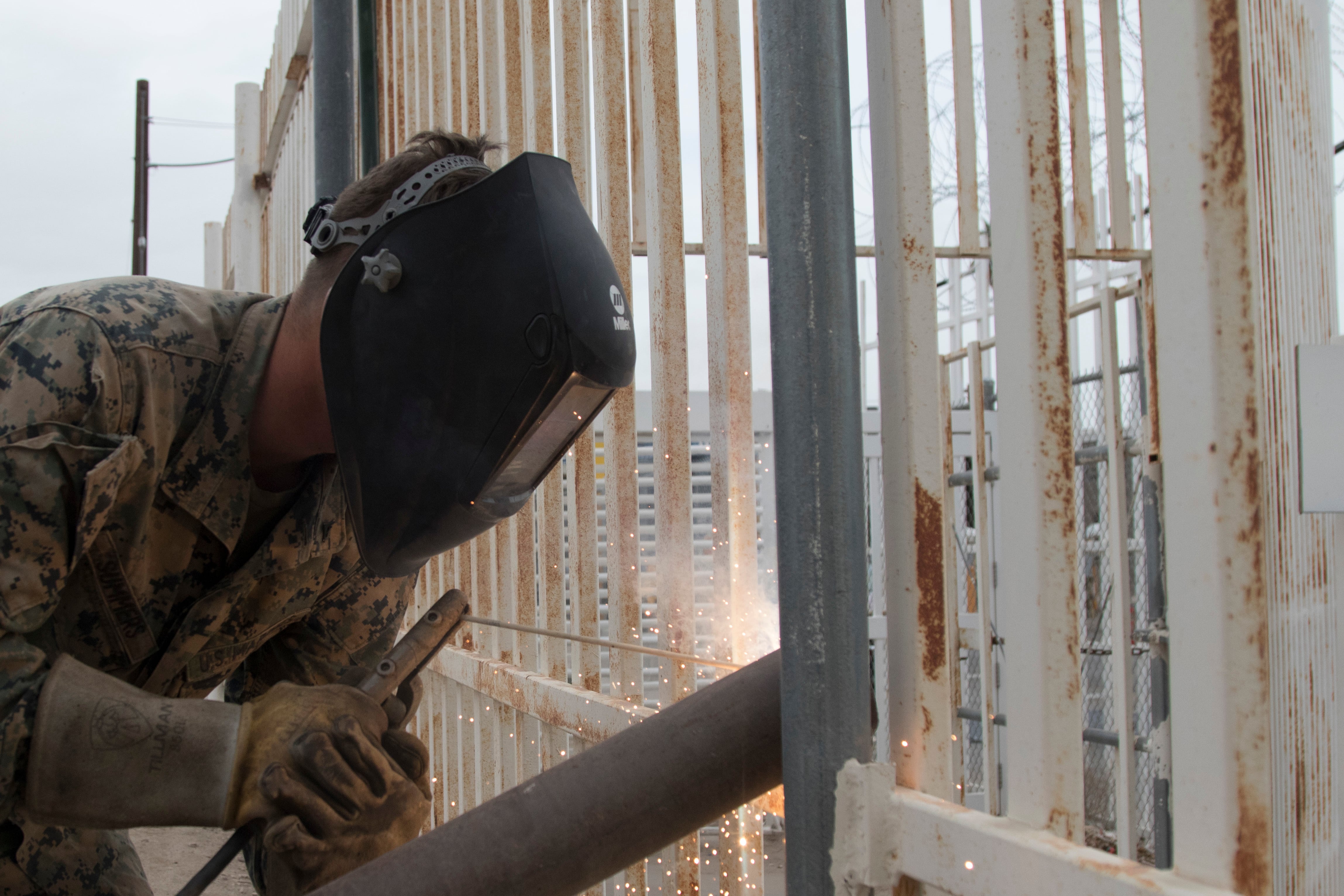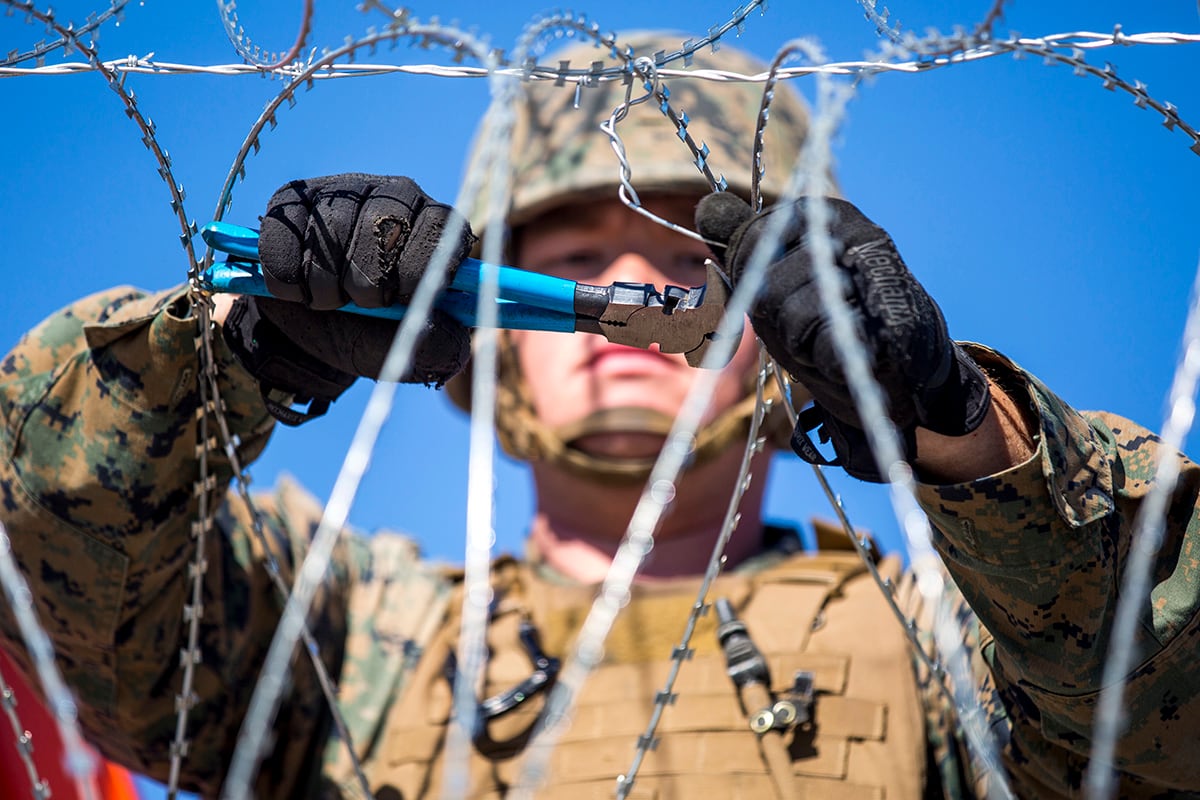WASHINGTON — Despite objections from Congress, White House officials will shift about $3.6 billion in military construction funds to build President Donald Trump’s controversial southern border wall, potentially delaying repairs and upgrades for facilities at a host of bases worldwide.
But administration officials said they are confident that they can move the money around without harming military readiness and lethality and that the defense construction projects will be repaid next year.
In a Rose Garden press conference on Friday, Trump said the move is justified because of the imminent national security threat posed by illegal immigration across the southern U.S. border.
“We fight wars 6,000 miles away, many we don’t have any business being in, but we don’t fight the wars at our own border,” he said.
RELATED

“We have tremendous amounts of drugs flowing into our country, much of it coming from the southern border … They say walls don’t work, but walls work 100 percent.”
Trump’s decision to declare a national emergency and reprogram the military construction funds came just hours after Congress passed a full-year budget for a handful of federal agencies — the Departments of Homeland Security and State, among others — avoiding a second partial government shutdown this year.
Lawmakers provided about $1.4 billion for Trump’s proposed wall project in that budget deal, nearly $4 billion short of the White House request.
Administration officials said they will tap about $600 million in Department of Treasury counter-narcotics funds and $2.5 billion in Defense Department anti-drug monies to make up that gap.
But they also argued that won’t be enough, prompting Trump’s decision to declare a national emergency. Congressional aides said that under existing authorities, the declaration gives the president broad appropriations reprogramming powers, including the ability to use funds already assigned to other military construction.
When asked if the moves could hurt military readiness, Trump responded that “some of the generals think this is more important.”
Acting White House Chief of Staff Mick Mulvaney told reporters that the move was necessary given the political stalemate in Washington over the immigration issue.
“We’ve been through a shutdown,” he said. “We’ve been through three weeks of Congress trying to work through funding border security. They can’t get their work done.”
Trump has argued that large caravans of migrants amassing in South and Central America pose a significant national security threat to southern states, and last fall he ordered several thousand active-duty troops to the region to help assist in Homeland Security efforts on border control.
In his address, Trump praised military members for their border security work thus far, calling their presence “necessary.”
“If we had a wall, we wouldn’t need the military,” he added.
But critics have blasted the president, saying he is militarizing the immigration debate with the troop deployments and money moves. They’ve also warned that moving around military construction dollars will hurt troops and their families by delaying needed base improvements.
RELATED

About $21 billion in unobligated military construction funds from the last five years are now available to the president for the wall construction. The money is connected to a host of planned housing, medical and logistics projects in the United States and overseas but has not yet been spent.
Administration officials said specific projects have not yet been selected for the funding reprogramming, but any decisions will be made in coordination with the Defense Department with an eye towards protecting force “lethality and readiness.”
They also said they would lean toward using money assigned to repair and maintenance for existing facilities that can be delayed until next fiscal year, when Congress will be asked to replenish those lost funds.
Capitol Hill staffers said they have not yet been given any indication what military construction projects are vulnerable under the emergency declaration.
Among the projects approved by Congress just last year are a new vehicle maintenance shop at Camp Arifjan in Kuwait, drydock repairs at Joint Base Pearl Harbor-Hickam in Hawaii, F-35 hangar improvements at Luke Air Force Base in Arizona, and new family housing builds in Korea, Italy and Wisconsin.
Even before Friday. the national emergency declaration drew harsh criticism on Capitol Hill, both from Democrats opposed to the wall proposal and members of the president’s own party.
House Armed Services Committee ranking member Mac Thornberry, R-Texas, a vocal defender of the president’s decision to deploy troops to the border, said that diverting “significant” Defense Department funds for the wall “would undercut one of the most significant accomplishments of the last two years: beginning to repair and rebuild our military.”
He warned that military infrastructure “was one of the accounts most deprived during the Obama-era defense cuts” and said he would lobby the president to consider other options for the wall project.
Democratic leadership has promised a lawsuit to challenge the emergency move. House Majority Leader Steny Hoyer, D-Md., said that he visited the southern border last week.
“I can attest that there is no crisis or emergency of the kind the president alleges," Hoyer said. He added that declaring a national emergency “would be a violation of the spirit of our laws and run counter to our constitutional principles of separation of powers.”
House Armed Services Committee Chairman Rep. Adam Smith, D-Wash., called Trump’s decision “putting his political agenda and empty campaign promises ahead of the needs of the American people.”
The more than $8 billion Trump will have available for construction after the emergency moves is expected to build about 234 miles of new wall along the country’s border with Mexico.
Leo covers Congress, Veterans Affairs and the White House for Military Times. He has covered Washington, D.C. since 2004, focusing on military personnel and veterans policies. His work has earned numerous honors, including a 2009 Polk award, a 2010 National Headliner Award, the IAVA Leadership in Journalism award and the VFW News Media award.








